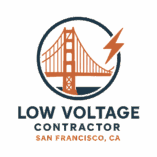San Francisco Building Codes Every Low Voltage Project Must Follow
Introduction
Low voltage systems in San Francisco—encompassing network cabling, security cameras, access control, and audiovisual equipment—are vital for modern residential and commercial buildings in San Francisco. However, strict city building codes and California regulations govern these installations. Failure to comply can result in fines, delays, and compromised safety. This guide outlines the essential building codes every low voltage project must follow and provides actionable insights for contractors and property owners.
Table of Contents
- Understanding San Francisco Low Voltage Regulations
- California Electrical Code (CEC) Requirements
- Permit and Inspection Procedures
- Safety and Accessibility Compliance
- Cabling and Installation Standards
- Common Mistakes and How to Avoid Them
- Future Trends in Low Voltage Compliance
- Conclusion and Key Takeaways
- FAQs
1. Understanding San Francisco Low Voltage Regulations
San Francisco enforces strict regulations on all electrical and low voltage systems to ensure safety and reliability. Key regulatory frameworks include:
- San Francisco Building Code (SFBC): Governs electrical and low voltage installations in all building types
- San Francisco Electrical Code: Ensures all wiring practices meet local safety standards
- Energy Efficiency Requirements: Compliance with Title 24 California Energy Code for lighting and low voltage devices
Insight: Working with licensed contractors familiar with SF regulations reduces the risk of project delays and legal issues.
2. California Electrical Code (CEC) Requirements
The CEC is the statewide standard for electrical installations, including low voltage systems:
- Voltage Limitations: Low voltage systems typically operate at 50V or less
- Grounding and Bonding: Proper grounding ensures safety against electrical faults
- Conduit and Raceway Standards: Specifies approved materials and installation methods
- Separation from High Voltage Wiring: Prevents interference and hazards
Expert Tip: Verify that all equipment is UL-listed and CEC-compliant before installation.
3. Permit and Inspection Procedures
Low voltage projects often require permits and inspections to ensure code compliance:
- Obtaining Permits: Submit project plans to the San Francisco Department of Building Inspection (DBI)
- Inspection Stages: Rough-in, pre-cover, and final inspections are common
- Documentation: Maintain detailed diagrams, equipment lists, and installation notes
Pro Advice: Early engagement with DBI inspectors can prevent costly rework.
4. Safety and Accessibility Compliance
Safety and accessibility are critical components of SF building codes:
- Fire Safety: Low voltage wiring must avoid fire hazards; compliance with NFPA 70 and NFPA 72 is recommended
- ADA Accessibility: Placement of security and access devices must meet accessibility standards
- Environmental Considerations: Systems in high-moisture or outdoor areas require weatherproofing and surge protection
Fact: Non-compliant installations may result in penalties, insurance issues, or increased liability.
5. Cabling and Installation Standards
Proper cabling is essential for performance and longevity:
- Structured Cabling Practices: Use color-coded cables, patch panels, and organized pathways
- Bandwidth Considerations: Cat6A or higher recommended for commercial networks
- Separation and Routing: Maintain distance from electrical wiring to reduce interference
- Equipment Mounting: Follow manufacturer and code guidelines for racks, enclosures, and mounting heights
Statistic: Studies show organized, code-compliant cabling can reduce troubleshooting time by up to 40%.
6. Common Mistakes and How to Avoid Them
- Skipping Permits: Leads to fines and project delays
- Non-Compliant Equipment: Reduces system reliability and safety
- Poor Documentation: Complicates maintenance and inspections
- Incorrect Wiring Practices: Causes interference, downtime, and hazards
- Ignoring Accessibility Codes: May violate ADA requirements
Actionable Tip: Develop a compliance checklist before installation to ensure all codes are followed.
7. Future Trends in Low Voltage Compliance
- Smart Building Integration: IoT and building automation require updated compliance strategies
- Energy-Efficient Installations: Growing emphasis on low-power devices and sustainable designs
- Cloud-Based Monitoring: Remote management tools must meet cybersecurity standards
Insight: Staying ahead of trends helps contractors maintain competitive advantage and code compliance.
Conclusion
San Francisco low voltage projects demand strict adherence to building codes, CEC standards, and safety regulations. Proper planning, licensed contractors, compliant equipment, and thorough documentation are essential to ensure successful installations. Working with an experienced low voltage contractor reduces risks, ensures system longevity, and protects both property owners and occupants.
Action Steps:
- Engage licensed contractors familiar with SF codes
- Obtain all necessary permits before starting work
- Ensure proper grounding, separation, and structured cabling
- Document installations and maintain records for inspections
- Stay updated on emerging trends and regulations
FAQs
Q1: Do low voltage systems require permits in San Francisco?
Yes, permits are required for most commercial and residential low voltage projects to ensure code compliance.
Q2: What voltage defines a low voltage system?
Typically, systems operating at 50 volts or less, including network, security, and audiovisual equipment.
Q3: Are UL-listed devices mandatory?
While not always legally required, UL-listed equipment ensures compliance with safety standards and reduces liability.
Q4: How often are inspections conducted?
Inspections usually occur at rough-in, pre-cover, and final stages, depending on project scope.
Q5: How can I ensure accessibility compliance?
Follow ADA guidelines for device placement, including access control panels, intercoms, and camera locations.
